Zaña that was
Competing with the Bosque de Pomac, in my opinion, as the most interesting place in Lambayeque are the ruins of Zaña. Refreshingly, these ruins are of a different kind to the ones you might be used to seeing while visiting Peru.
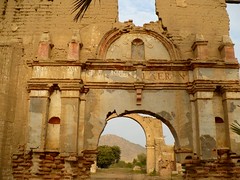 This once opulent colonial city was founded in 1563 and was populated by the elite of the Spanish arrivals. Trujillo had been founded and was growing well, as were the Spanish cities of Lambayeque and Piura to the north. In the Zaña valley things were just as good for the new arrivals. The Spanish settlers here put the 3,000 Chimú descendants in the region to work on the land as peasants; harvesting, collecting fruit and mining for gold and silver. There was never enough gold for a gold rush to occur, but the Spanish settlers did become very rich. Indigenous peasants were supplemented with African slaves as the city grew in size and population.
This once opulent colonial city was founded in 1563 and was populated by the elite of the Spanish arrivals. Trujillo had been founded and was growing well, as were the Spanish cities of Lambayeque and Piura to the north. In the Zaña valley things were just as good for the new arrivals. The Spanish settlers here put the 3,000 Chimú descendants in the region to work on the land as peasants; harvesting, collecting fruit and mining for gold and silver. There was never enough gold for a gold rush to occur, but the Spanish settlers did become very rich. Indigenous peasants were supplemented with African slaves as the city grew in size and population.
Zaña was laid out and built according to the established rules for the “colonisation of the Indias” of king Carlos V. that stated how a new city should be arranged. Zaña made some improvements though, building the roads wide enough so that two carts could pass at the same time. The growing town was also very religious. Four convents were built as well as four churches, all within a couple of blocks of the plaza.
As the city grew, as well as becoming rich through mining, the whole Chiclayo area became one of the most important agricultural centres in the vice royalty. Zaña, one hundred years after its foundation was now the most important city in the region and one of the most important in the Spanish empire. Even some of the elite of the first important city in the north, Trujillo, packed up and moved to fashionable Zaña.
Zaña had become the city of the Spanish rich. Exerting as much influence and controlling as much wealth as the famed City of Kings, imperial capital Lima. Lined with mansions, beautiful churches and splendid public buildings, Zaña was on course to perhaps become the future capital of Peru.
However, success soon turned to disaster.
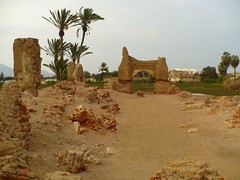 Zaña’s wealth attracted trouble. Despite it being some distance from the coast, it wasn’t far enough to avoid suffering pirate attacks. In 1689 English pirate Edward Davis launched raids all along the South American coast. One of the cities he sacked was Zaña. The attack saw the city heavily damaged, with many killed and most of the Spanish population fleeing. The city never recovered and went into decline.
Zaña’s wealth attracted trouble. Despite it being some distance from the coast, it wasn’t far enough to avoid suffering pirate attacks. In 1689 English pirate Edward Davis launched raids all along the South American coast. One of the cities he sacked was Zaña. The attack saw the city heavily damaged, with many killed and most of the Spanish population fleeing. The city never recovered and went into decline.
As the rich Spanish fled, many to Lambayeque, they left their property in control of their slaves. After decades of inhuman abuse, these slaves decided to make use of their new found freedom by the houses and contents left behind as their own. It wasn’t so much as a rebellion as no-one being around to tell them what to do. To the horror of the remaining Spanish families, now outnumbered by abandoned slaves, parties were held and long suppressed pagan rituals performed and songs sung.
Those few Spanish families who stayed around for the next 30 years were in for another shock. A sudden fall of rain caused by the El Niño phenomenon, and a large amount of rainfall in the Andes conspired to send a deluge of water rushing down the valley. This flash flood saw all the town’s mansions and houses destroyed and heavy brick buildings left in complete ruins. Rufugees once more fled to Lambayeque, leaving behind Zaña never to return.
The town was refounded two years later by freed slaves and the indigenous population and is still there today, 46km south of Chiclayo. Between what are now fields and small houses, the ruins of the churches of Zaña are an impressive site. It’s difficult to imagine you were once in a city rivalling colonial Trujillo and Lima. Today the town is home to a large black and mixed population and, like Chincha’s El Carmen in the south, a place to see preserved songs and dances of Afro-Peruvians.
Photos –
Tags: 1500s, 1600s, 1700s, colonial, edward davis, el niño, lambayeque, pirates, ruins, spaniards, zaña




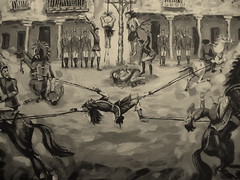
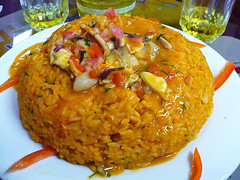
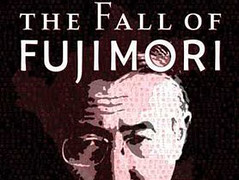
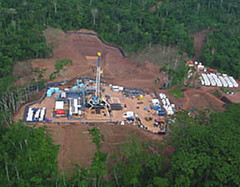
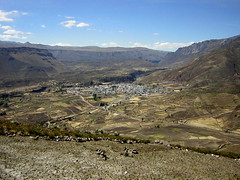
![Cusco’s Señor de los Temblores [Featured]](http://farm4.static.flickr.com/3330/3432051172_c4d9ff49f6_m.jpg)
